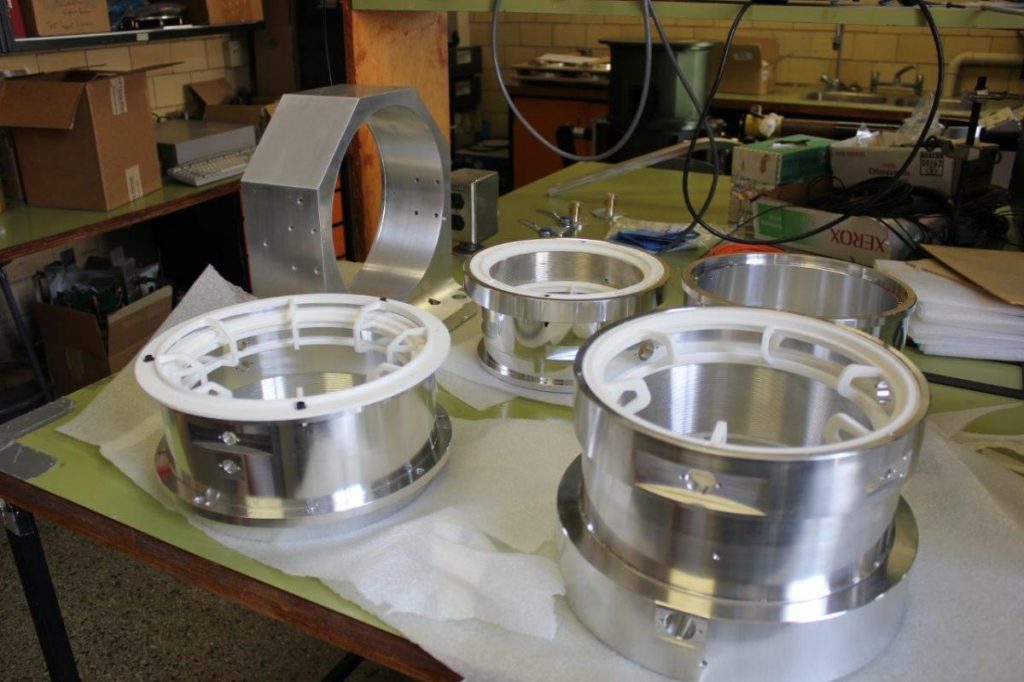2016 October: SPIRou science camera integration and tests at UL & UdeM
Following integration, the SPIRou science camera is being tested at UL & UdeM
The SPIRou spectrograph includes a dedicated fully-dioptric camera that will focus on the science detector the diffracted and collimated beam, coming from the prisms, grating and parabola.

This impressive opto-mechanical assembly consists of 5 successive large lenses (up to 237 mm in diameter and 35 mm in thickness) made of specific glasses offering optimal performances in the near infrared: three of them are in BaF2 (Barium Fluoride), one in Infrasil (fused silica) and one in S-FTM16.
Each lens is maintained in position via several mechanical devices minimizing stresses in the optics and compensating for the thermal contraction when cooling the spectrograph down to cryogenic temperatures (80 K). The ring assembly supports the camera on the spectrograph optical bench and allows tilt adjustment.
The science camera was designed by Université Laval (UL) and Université de Montréal (UdeM) under the supervision of Olivier Hernandez, Simon Thibault, Philippe Vallée, Etienne Artigau and René Doyon. Opto-mechanical alignment and tests are ongoing at UdeM, consisting in measuring the back and effective focal lengths of the full assembly, at ambient temperature to confirm that each lens is well dimensioned and accurately positioned.
The next integration step will consist in mounting the test detector on the rear side and at the focal plane of the camera.




